Building Our House II
A few mornings ago we set out early to check on our new property. The designers/contractors had told us that the albañiles (workers) had begun demolition and we wanted to check it out for ourselves. As we drove from our office in the north of the Centro down Calle 66 to the southern part of the Centro, we noticed how quiet and lovely the city is on the weekends. It's a lot like any other city that way. People come in from the outskirts to work, so on the weekends, the city is a lot quieter and parking is easier.
We got to our new home, which is as yet unnamed, and no one was there. We had a key, but after much fussing, realized that the key we had worked on the left door (there are two doors into the building) but that door had been boarded up from the inside. The key did not work on the right door, which is now the only way to get in. We called the designers/contractors, went to their house (which is close by) and picked up the right key. Back at the house, the abaniles had arrived for the day and we didn't need the key. Que tipico!
The albañiles (there were five of them that day) had all arrived in a open truck from the nearby town of Uman. This is very typical. Most albañiles live outside of Merida in a small town and they are hired as a team. Someone has a truck and they all pile in the back, often sitting on bags of cal or cemento or whatever else is also being trucked to the job. Unlike in the States, there don't seem to be any enforced regulations about how people ride in vehicles, so they just pack in as many people they need at the destination.
We introduced ourselves to one or two of the albañiles and then went back into the property to peruse the progress that had been made on demolition of the existing buildings. The design of our new house calls for keeping the front two rooms of the existing structure, which are the oldest and are built with mamposteria (stone and mortar) walls and high ceilings. The additional rooms were added on later and are typical cinder block construction, so they are fairly easy to demolish.
By the way, if you are going to build in the Yucatan, you'll want to learn the word mamposteria (mom-post-ter-EE-uh) . It is the name given to the kind of stone and concrete wall that has been built here for centuries. Most old colonial buildings here have some if not all walls built that way. They are incredibly sturdy and insulate well against the heat, keeping the rooms cool during the day. But it is rather difficult to put tuberias (pipes for plumbing or electrical) into those walls. In most of the older buildings here you will see electrical lines running along the surface of the walls.
Anyway, while we were observing the destruction of the non-mamposteria walls on our property, one of the men introduced himself. He was going to be building the walls around the property and he told us his name was Jose Paredes. We all had a good laugh at that, since paredes means "walls". He told us that the man who owned the property on the other side of our house wanted to sell the land behind his house to us. We explained that we had been offered the land on the other side as well, but that it is difficult to add land like that to our fideicomiso. However, we told him, we might be interested. We also told him we would be more interested if he or someone could offer us land that allowed us access to the street. As we understand it from our lawyer, if the land has access to the street, it wouldn't have to be added to the existing fideicomiso, but could just be purchased separately, which can happen a lot faster.
Update: A week or so later, and the demolition was finished and there is escombro everywhere. What is escombro? It's the debris you find in an empty lot, or after tearing down a wall. Anything related to construction that has to be hauled away... that's escombro.
The demolition was probably finished sooner than this, but we just got our car back from the shop, so this is the first time we've visited since all the walls have been torn down. As we expected, the space is really opened up and we enjoyed walking around, trying to get a feel for the size and space of the rooms in our now-approved house design.
While we were there (walking our two dogs on leashes), the neighbor peeked over the wall and then her dalmation, named Mancha, came over to visit. The word mancha means "stain", "track" or "spot", like a dirty spot on your clothes that you need to clean. Mancha is a very macho dog and he has decided that our property is his. He doesn't bark or get nasty; he just pees on everything. (We don't actually use that word here. Here we say wixar, a popular Mayan expression that means the same thing.) After Mancha pees, he vigorously kicks up a lot of dust with his hind legs like a raging toro, probably to spread his scent as far around as possible.
We were talking to the neighbor, exchanging pleasantries and letting the dogs get to know each other, when before we could yell or stop him, Mancha dar a wixar on Working Gringo's LEG! Suddenly, WG felt like *he* had a spot he needed to clean very badly, so we left. We had been feeling a little sorry that in walling in our property, we'd be depriving Mancha of his dog run. But after that, we decided that it was just his karmic due.




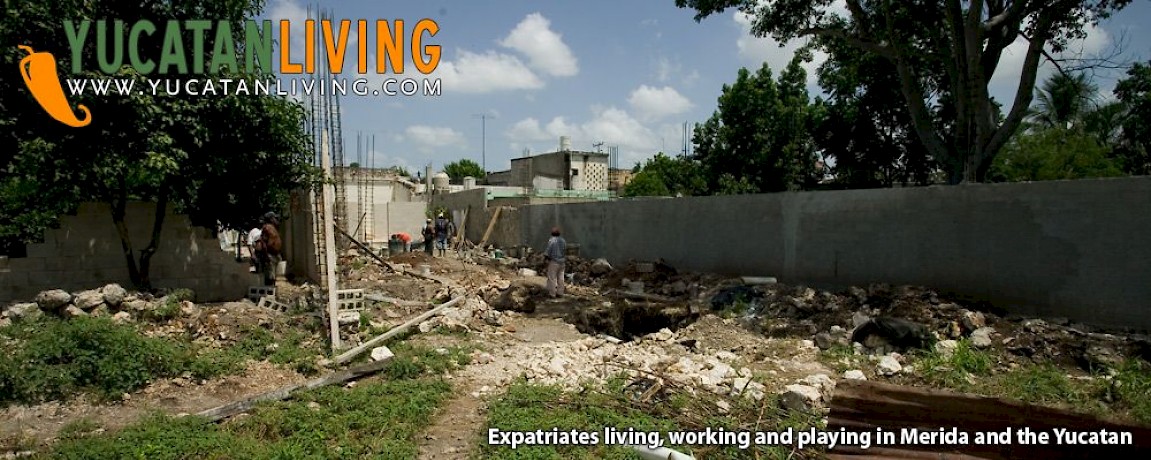


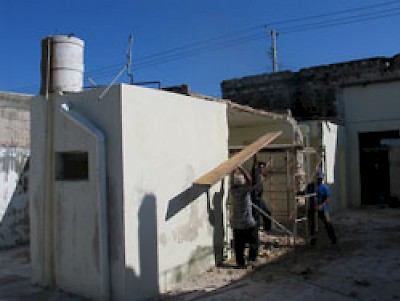
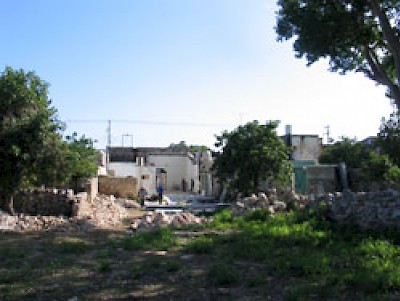
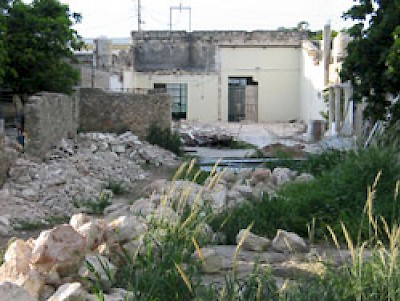
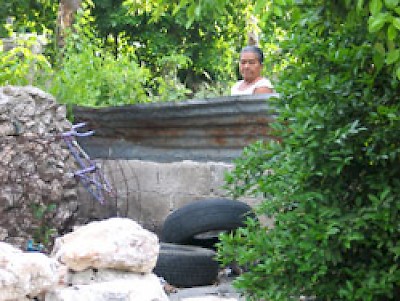


Comments
Working Gringos 17 years ago
Barro y Barro is loated on Calle 6 #84 between 13 and 15 in Colonia Felipe Carrillo Puerto. But that probably isn't much help, is it?
Take Paseo Montejo north, turn right at the WalMart corner. Follow the street as it turns left and becomes Perez Ponce. Make a right at the stoplight, which is Aleman. Proceed to the stoplight that has the Pemex on the right corner. Turn left. Barro y Barro will be a few blocks down that road on your right.
Easy, right?
Reply
Mike Bell 17 years ago
Could you please give me the address for the tile store, Barro y Barro, and any other tile stores with "local color".
Thanks
Reply
Anthony 17 years ago
Hi
great job and home enjoy every bit of it
can you recommend a contractor, painter and somebody that does electrical work and a insurance company that will insure for flood and hurricanes
right now in the stages of closing on our home(Chelem)..it does need a little work very little..
thank you and have a great week
anthony4nj@hotmail.com
Reply
Building Our House V 19 years ago
[...] Building Our House II [...]
Reply
Building Our House IV 19 years ago
[...] **** To read the progress of our house project (something we find a bit painful, but you might find interesting…), here are the links: Building Our House III Building Our House II Building Our House (Please rate this article) Loading ... [...]
Reply
Working Gringos 19 years ago
Muchas gracias, Kitty! So glad you like it here... we'll try to keep you entertained and informed until you can get back :-)
Reply
b. kitty 19 years ago
Your site may well be my favorite new blog to check out. I've been to your area twice now, and fell completely in love. I'd love to move to Mexico...just gotta get my PhD first...
Reply
Working Gringos 20 years ago
You know, you are the second person to point that out. The first one (thanks, Alisa) was kind enough to do it in a private email this morning...and we forgot to fix it. So now we stand corrected! Gracias.
Reply
mcm 20 years ago
I bet you mean "albaniles" (with a tilde over the n!), not "abaniles"
Sincerely,
picky eater
Reply
KAT 20 years ago
hahaha... you're matching Mancha's "wix" with a wish of your own! That's what he gets for being a Bad Spot.
The day I learned about "wixar"... my students were studying the difference between "to wish" and "to hope". With many opportunities to repeat these words, students got a great case of the giggles.
Reply
(0 to 10 comments)